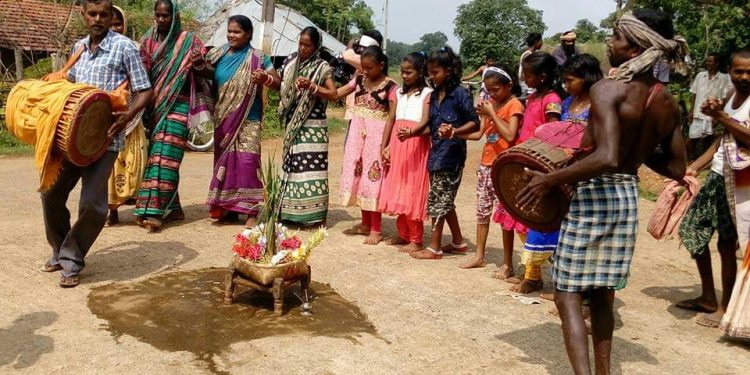Adivasis, or the original inhabitants, comprise around eight per cent of our country’s population. This makes India the largest country with maximum tribal population in the world. That said, barring a few like the Sentinelese (of Andaman and Nicobar Islands), most of these communities have adapted to the modern lifestyle and integrated themselves into mainstream society. However, they have at the same time held on to their roots and kept their identity intact, thanks to the distinct customs, rituals and festivities. Much like mainstream society, festivals play an important role in tribal culture too. One such festival is Karama Puja. Celebrated for the wellbeing of one’s family, Karma Puja is one of the most important events in the calendar of the tribals living in Odisha. Although it is celebrated primarily in tribal-dominated regions of Mayurbhanj, Sambalpur, Bolangir and Sundargarh in Odisha during August and September, it continues to be a grand affair for the tribal community in Jharkhand and West Bengal. Sunday POST catches up with a few members from the tribal community to know more about the festival, rituals and celebrations.
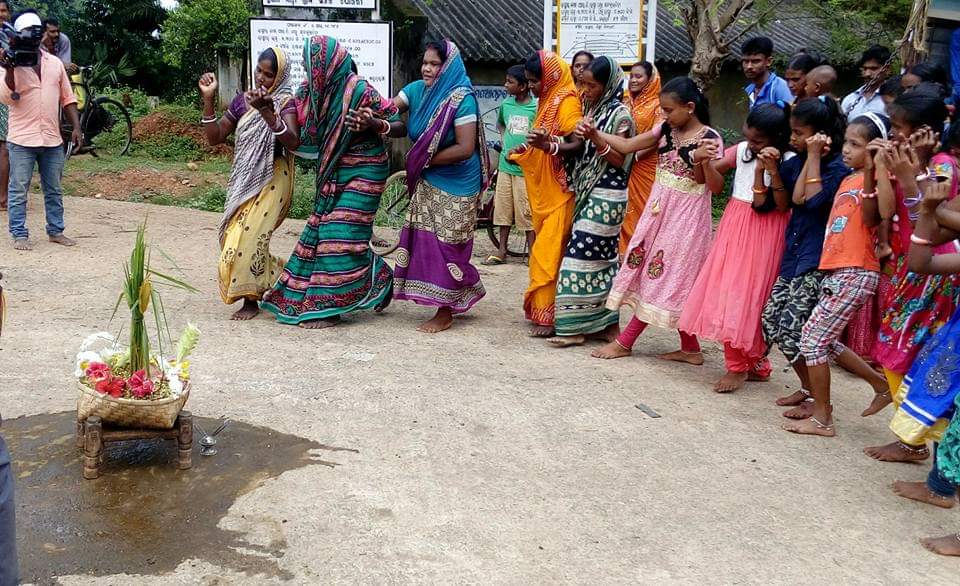
Hadibandhu Bindhani from Goudarama village in Mayurbhanj is an ardent follower of Karama deity for the last 50 years. He says, “Karma Puja is one of the most popular festivals in Mayurbhanj and is linked to harvesting season. It is celebrated over a period of three days (Tuesday to Thursday) in any week of August or September as decided by the priest. The devotees go into the nearest river in new clothes on a Tuesday. After performing certain rituals, they collect some sand in a bamboo basket and return to the village. The sand is kept at a designated place and five varieties of grains – urad, moong, mustard, horse gram and flax seed – are placed on the sand. The seed germinates by Thursday, which is considered auspicious. People believe that they have been blessed by the deity. Next, they collect branches of Karama tree. We sing and dance while performing this ritual. All the rituals are conducted under the supervision of a village priest. After the separation from the tree, the branches are accorded the status of god and the priest plants the branches at the centre of an open yard. The place is plastered in advance with cow dung and decorated with flowers. The branches are offered garlands, curd, rice and flowers. People of Kudumi and Mahanta communities consider it one of the most auspicious days of the year.”
Talking about other rituals, Hadibandhu says, rice beer, fruits collected from forests and local beverages are offered as ‘prasad’ to Karama deity. “The entire night is spent listening to the priest who narrates the generosity of the god, while devotees dance to beats of drums. The immersion ceremony takes place amidst dance and songs,” he adds.
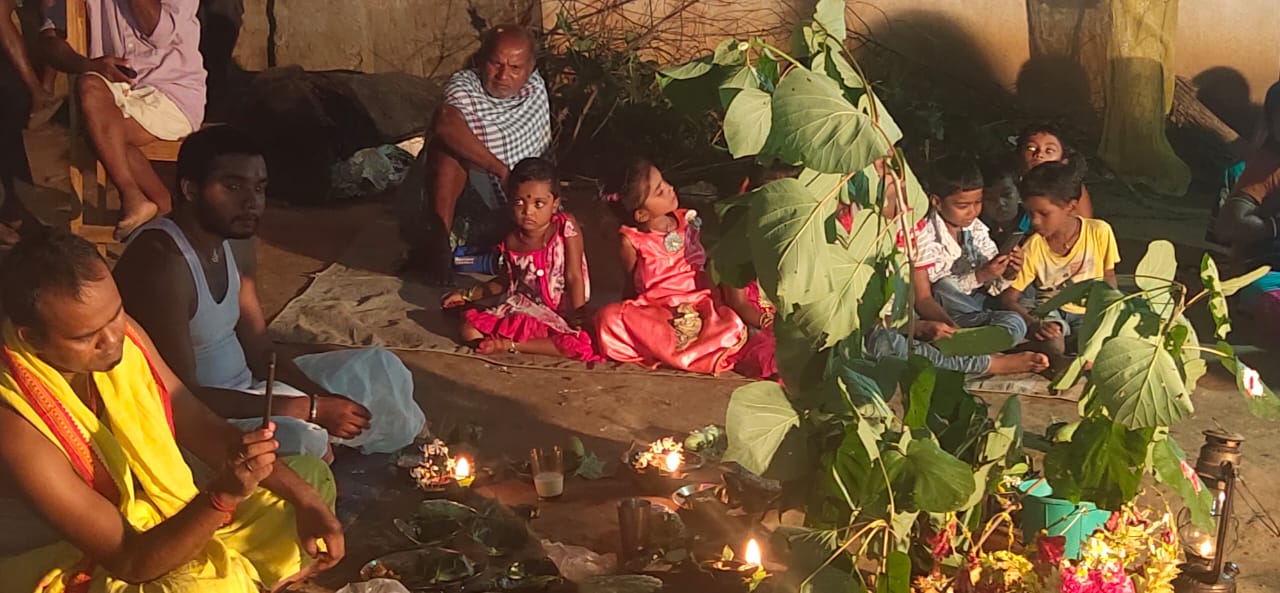
Another devotee Shyamasundar Tudu, a teacher from Khukundaa, Mayurbhanj, says, “Karama Puja, among all other things, is a tribute to the Karama tree that symbolises fertility, prosperity and everything that is auspicious. Tribals believe that Karama tree is a living being and god’s representative. This is why they worship its seeds and branches along with sand and other local produce. Karama Devta is worshiped by the tribals who are dependent on nature for their livelihood. The day is also important for the siblings as the sisters pray for their brothers’ well being. Married couples also worship the deity for happy conjugal life.”
Lalalajpat Mohanta has been associated with the rituals of the festival since childhood. He says people irrespective of age group, gender and social standing, soak in devotion while worshipping Karama deity. Apart from fun and frolic, a lot of spirituality and philosophy is involved with the festivity. “We are completely dependent on land, water and forest for our survival. Nature and environment is our god. If we take care of Mother Nature and worshipped her with austerity, she relieves us of our sufferings and showers blessings on us. Boys go deep into the forest and collect timber, fruits and flowers which are used during puja. We dance, sing and enjoy on all three days. People who stay outside the district return to the village to be with their families during this time. Girls also play a crucial role in the festival. It is believed that if a maiden keeps fast on the last day, the farming community in the village will have a great harvest. It is also believed that if girls follow the rituals sincerely, they get good life partners,” said Lalalajpat.
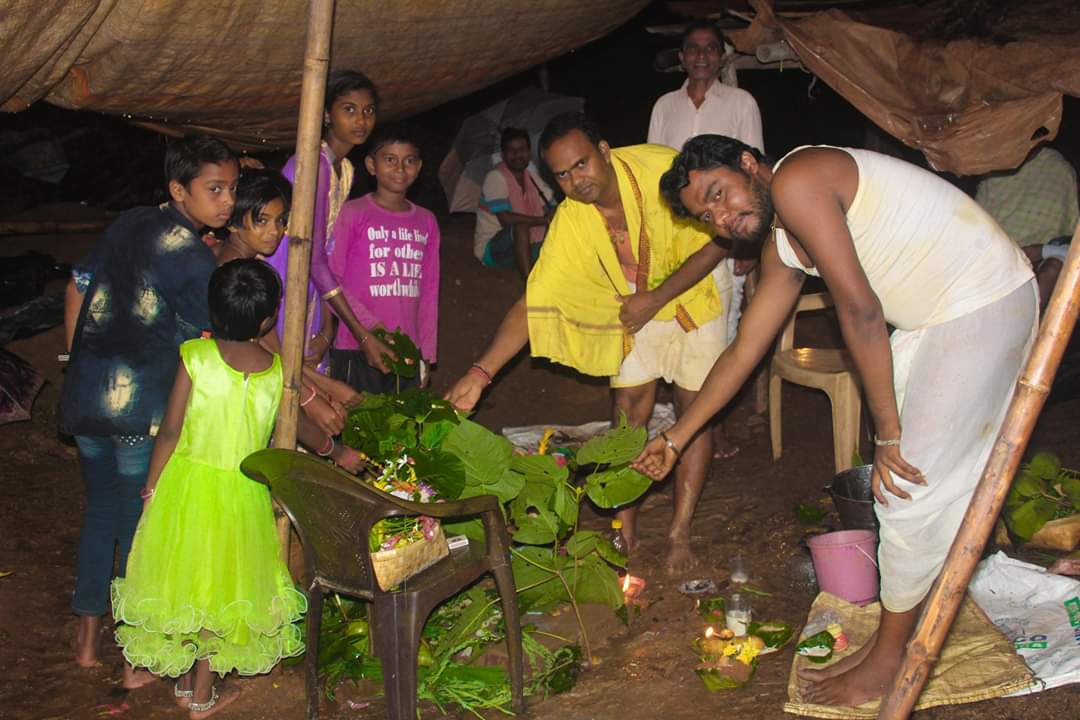
Although Karama Puja is one of the most important festivals of the tribals in Odisha, not all communities prefer celebrating it.
Dhiren Bag, an author and social worker from Kuliana, Mayurbhanj, says, “We do not celebrate Karma Puja in our community. However, it is celebrated in a big way in our village as most people here belong to the Kudumi and Mahanta communities, which observe the festival with much fanfare. Those who do not celebrate, however, do turn up to witness the rituals. I have been a part of the festival since my childhood. Though many from these communities are now part of mainstream society, they haven’t forgotten their roots. They follow the rituals with all sanctity and utmost dedication.”
Lili Mahanta, who is doing her masters in social work in Bhubaneswar, says, “Karma Puja tops the list of important festivals celebrated by the tribals. This year we celebrated the occasion with gaiety and had lots of fun. We kept fast on the last day of the festival. For me, the most enjoyable part of the festival was to form a human circle with hands placed on each other’s waists and dance tirelessly. Although I stay in Bhubaneswar, my heart is always at my birth place and I eagerly wait for these three days every year.”
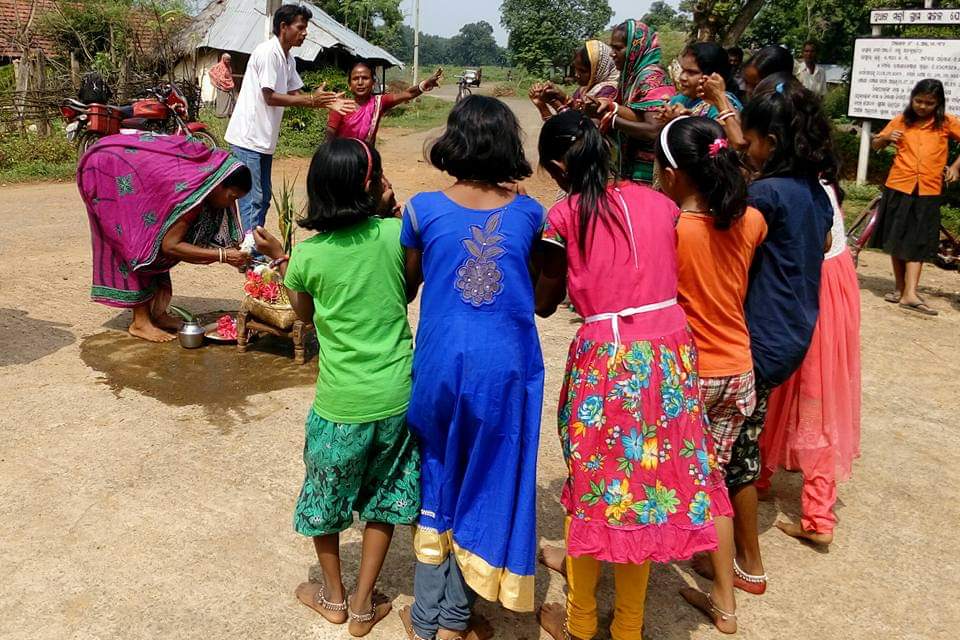
Key highlights
- Maidens collect Karama twigs from the forest which are planted at the centre of the venue and worshipped
- People celebrate the festival singing and dancing to the beats of drums
- A domestic bird is sacrificed and it is believed that it will please the deity
- The chief priest of the village describes the significance of the festival to the villagers after completion of all rituals
Legends galore
Legend has it that long time ago there were seven brothers in a farmer’s family in a tribal hamlet. They worked so hard for the family’s sustenance that they didn’t get time to return home for lunch. So, the wives used to carry the food to their farmland every day. One day, the women didn’t turn up at the field. So, the brothers had to return home hungry in the evening. They were angry. The seven men became furious when they spotted their wives singing and dancing around the Karama tree branches. They lost their cool and dumped the tree branches in the river without thinking about the repercussion. After that incident, their cultivation suffered and the family economy collapsed. They struggled for food and would starve most of the time. Soon, they realised that they had earned the wrath of Karama deity by insulting her and sought advice of the village priest. Following his instructions, the brothers searched for the deity and managed to bring her home with all respect. Their condition once again improved and since then Karama festival is celebrated among the indigenous peoples of this region.
Another legend goes on to state that a merchant was returning home through water route with loads of valuables after doing good business. He waited for his wife and relatives who were supposed to welcome him and his vessel’s crew. But to his frustration, no one turned up. After waiting for long, he rushed to his home only to discover his family members celebrating Karama festival. Infuriated, he uprooted the Karama twigs and threw them away. Then he went to unload the valuables from his vessel. But it was not to be. The vessel had sunk in the water by the time he reached the shore. Soon, he realised his blunder and bowed before the goddess seeking retrieval of wealth. The goddess listened to his prayers and the merchant got his wealth back. Since then, people from the tribal community have been celebrating the festival.
BRATATI BARAL, OP

